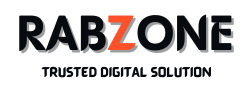
WordPress powers over 40% of the web, making it a prime target for hackers. To keep your website secure, it’s crucial to stay updated with the latest security measures. This blog post will explore the newest security systems and best practices to safeguard your WordPress website in 2024.
1. Multi-Factor Authentication (MFA)
One of the most effective ways to prevent unauthorized access is Multi-Factor Authentication (MFA). New plugins like WP 2FA and Shield Security now offer enhanced authentication methods, such as biometric login and time-based one-time passwords (TOTP).
How to Implement MFA on Your WordPress Site:
Install a plugin like WP 2FA.
Enable TOTP-based authentication.
Require MFA for all admin and editor accounts.
2. AI-Powered Threat Detection
Artificial intelligence is now being used to detect and prevent security threats in real-time. Tools like Wordfence Security AI and Defender Pro analyze login attempts, unusual traffic patterns, and potential vulnerabilities, offering proactive defense.
Benefits of AI Security Tools:
Detects suspicious activity in real-time.
Reduces false positives compared to traditional security plugins.
Improves firewall protection against evolving threats.
3. Advanced Web Application Firewall (WAF)
A Web Application Firewall (WAF) acts as a shield between your website and malicious traffic. The latest WAF solutions, such as Cloudflare WAF and Sucuri Firewall, provide enhanced protection against DDoS attacks, SQL injections, and XSS vulnerabilities.
How to Set Up a WAF:
-
Choose a reliable provider like Cloudflare or Sucuri.
-
Configure your firewall settings based on your website needs.
-
Regularly update firewall rules to adapt to new threats.
4. Automatic Security Updates
Outdated plugins and themes are a major security risk. WordPress now allows automatic updates for core files, themes, and plugins. Enabling this feature ensures that your website is always protected against newly discovered vulnerabilities.
Steps to Enable Automatic Updates:
-
Navigate to Dashboard > Updates in WordPress.
-
Enable automatic updates for plugins and themes.
-
Use Easy Updates Manager to customize update preferences.
5. Zero-Trust Security Model
The Zero-Trust Security Model is gaining popularity in WordPress security. It follows the principle of “never trust, always verify,” requiring users and devices to prove their legitimacy before accessing sensitive areas.
How to Implement Zero-Trust Security:
-
Restrict admin access based on user roles.
-
Require device authentication for login attempts.
-
Limit API access to verified sources.
Conclusion
With cyber threats evolving rapidly, it’s essential to implement these new security measures on your WordPress site. By adopting MFA, AI-powered threat detection, WAFs, automatic updates, and Zero-Trust security, you can significantly reduce the risk of attacks.
Stay proactive, update your security settings, and keep your website safe in 2024!
Need help securing your WordPress site? Contact RabZone for expert security solutions!
